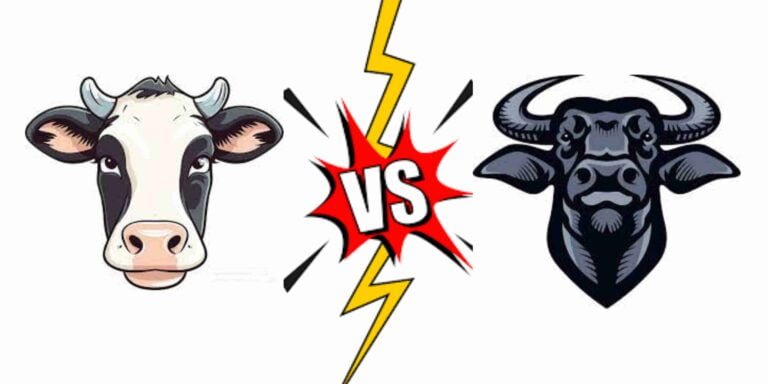Understanding the Key Differences Between Cow and Buffalo: Milk, Ghee, and Curd
In the world of dairy, cow and buffalo are two prominent sources that provide us with essential products like milk, ghee, and curd. While these products might seem similar at first glance, there are significant differences between those derived from cows and buffaloes. In this comprehensive guide, we’ll explore the disparities between cow and buffalo and their dairy products, and how to differentiate between them.
Table of Contents
Differences Between Cow and Buffalo
1. Physical Characteristics
- Cow: Cows are typically smaller in size compared to buffaloes, with a more streamlined body structure. They have a gentle demeanor and are more commonly domesticated.
- Buffalo: Buffaloes are larger and bulkier animals with a distinctive hump on their backs. They have a more robust build and can be more challenging to handle due to their size and strength.
2. Milk Composition
- Cow Milk: Cow milk is lower in fat content compared to buffalo milk. It contains a higher proportion of whey protein, lactose, and vitamins such as vitamin B12 and vitamin D.
- Buffalo Milk: Buffalo milk has a higher fat content, making it creamier and thicker in texture. It contains more calcium, protein, and minerals like iron and phosphorus compared to cow milk.
3. Taste and Texture
- Cow Milk: Cow milk is lighter in taste and has a more watery consistency. It is preferred by those who enjoy a milder flavor in their dairy products.
- Buffalo Milk: Buffalo milk has a richer taste and a creamier texture. It is often preferred for making desserts and dairy products that require a thicker consistency.
How to Differentiate between Cow & Buffalo milk
1. Color and Creaminess
- Cow Milk: Cow milk tends to be white in color and has a less creamy appearance compared to buffalo milk.
- Buffalo Milk: Buffalo milk is slightly off-white and appears creamier due to its higher fat content.
2. Fat Content
- Cow Milk: Skim cow milk has a lower fat content, while whole cow milk contains around 3-4% fat.
- Buffalo Milk: Buffalo milk typically contains 6-7% fat, giving it a thicker consistency and creamier texture.
3. Protein Content
- Cow Milk: Cow milk has a lower protein content compared to buffalo milk.
- Buffalo Milk: Buffalo milk contains more protein, contributing to its thicker texture and higher nutritional value.
Differences between Cow & Buffalo ghee
1. Nutritional Composition
- Cow Ghee: Cow ghee has a milder flavor and a lighter texture compared to buffalo ghee. It is rich in antioxidants and contains lower levels of saturated fats.
- Buffalo Ghee: Buffalo ghee has a stronger flavor and a denser texture. It is higher in saturated fats and is believed to have more medicinal properties.
Differences between Cow butter & Buffalo butter
1. Fat Content
- Cow Butter: Cow butter has a lower fat content compared to buffalo butter, resulting in a softer texture and milder flavor.
- Buffalo Butter: Buffalo butter contains more fat, giving it a firmer texture and a richer taste.
Differences between Cow milk curd & Buffalo milk curd
1. Texture and Creaminess
- Cow Milk Curd: Cow milk curd is lighter and less creamy compared to buffalo milk curd.
- Buffalo Milk Curd: Buffalo milk curd is thicker, creamier, and has a richer flavor profile.
In conclusion, while cow and buffalo are both valuable sources of dairy products, there are distinct differences in their milk, ghee, butter, and curd. Understanding these disparities can help consumers make informed choices based on their preferences and dietary needs. Whether you prefer the lighter taste of cow milk or the creamier texture of buffalo milk, both options offer unique benefits that cater to different palates and culinary applications.
